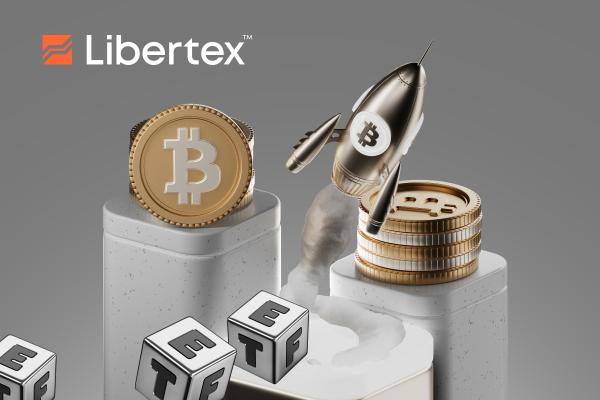Well, it's been a long time coming, but the approval of the first raft of spot BTC ETFs has finally come. It's a story that really began as far back as 2013 when the Winkelvoss twins put in the first application for such a product to the SEC, which was summarily rejected. Then, back in 2021, a major milestone was reached when ETFs based on Bitcoin futures products were finally given the green light. But all of that was leading up to last Wednesday (10/01/2024) when the nearly year-long application process for pure spot ETFs finally came to a positive end. As many had predicted, the reasoning behind the SEC's lengthy review period appeared to be to ensure no undue advantage was granted to one issuer. All told, 11 applications were approved at once by the regulator, including from major investment firms such as Ark21, VanEck, iShares, Blackrock, WisdomTree and Grayscale.
Since trading officially began, cash has been flooding into these newly approved vehicles. By their fourth day of trading (17/01), the cumulative total inflows for all 11 ETFs had already surpassed the $11 billion mark. Of course, much of this was countered by outflows from inferior futures-based products, but we've still seen net inflows of over $1 billion. And many analysts are saying that this is just the tip of the iceberg. Edul Patel, CEO & Co-founder of Mudrex, for instance, predicts that this figure will top $5 billion in the next three months. Yet, BTC's price action has been pretty stagnant in the immediate run-up and aftermath of this historic move. So, what can Bitcoin investors expect for the rest of 2024, and what will be the biggest factors to watch in 2024?
The bigger half
Beyond the approval of spot ETFs, the most hotly anticipated development in the Bitcoin space during 2024 has to be the impending halving (expected in April-May). Now, the phenomenon of halving — when the reward per block for miners is reduced by 50% — occurs once every four years and has historically resulted in large price increases for BTC. After all, it is BTC's limited supply of 21 million coins that makes it a viable alternative to gold, so increasing difficulty and lower nominal rewards for miners are inevitable as the number of remaining coins falls. But miners continue undeterred. Why? Well, even though the nominal reward per block will halve from 6.25 BTC to 3.125, the enhanced scarcity is expected to make Bitcoin at least twice as valuable over time.
We would do well to remember that BTC has actually gained over 105% over the past year in a global context where risk assets would ordinarily underperform. This lends credence to the commonly held belief that halvings are priced in well before the actual halving date. That said, Bitcoin has enjoyed bull cycles for several months after every halving so far. For example, six months after the network's second halving in 2016, BTC crossed the $1,000 mark for the first time. A similar rally happened in 2020 when the OG cryptocurrency set a new all-time high. CoinShares expects the initial bump in new coins to be followed by a "miner exodus" and predicts the "average cost of production per coin" to normalise at just under $38,000 post-halving. This would suggest that any significant drop below the key support of $40,000 is unlikely going forward.
Becoming an institution
Another key factor not only for Bitcoin's future growth but also for its stability as a long-term investment vehicle will be its wider adoption by institutional investors. Initially wary of its inherent volatility and unpredictable price swings, many investment funds and financial institutions avoided BTC and crypto in general. But this has all changed in recent years. Last year, for instance, Bitcoin recorded $1 billion in net inflows from institutional investors and this figure is predicted to increase in 2024. The spot ETF approval is, of course, a major catalyst for this, with Mathew McDermott of Goldman Sachs stating that this "would broaden and deepen liquidity in the market", attracting traditionally crypto-shy institutional investors like pension funds and insurance companies.
The US isn't the only place where we're seeing encouraging regulatory action liable to draw in more institutional investors. Other worldwide initiatives, such as the EU's MiCA legislation, regulatory progress in Singapore, Hong Kong, and Japan, and the UK's Digital Securities Sandbox, are all viewed as significant steps forward by investment professionals. Meanwhile, Bitfinex has suggested that anticipated interest rate cuts from the Fed in 2024 could encourage risk-on sentiment in institutional investors, including for Bitcoin. As the company's analysts put it: "A rate cut situation could make risk assets like Bitcoin more attractive to institutional investors seeking higher returns in a lower interest rate environment". All of these factors would suggest a strong year ahead for Bitcoin. Should they all converge at once, it could spark another bull cycle like 2021–2022.
Bitcoin CFDs and beyond with Libertex
With Libertex, you can trade a wide range of CFDs in a variety of underlying asset classes — from stocks, indices and forex all the way through to metals, ETFs and, of course, crypto. Libertex's impressive digital currency offering includes CFDs in major coins like Bitcoin and Ethereum, BTC forks like Bitcoin Cash and Bitcoin Gold, and even crypto CFD derivatives such as the Grayscale Bitcoin Trust. If you'd like more information or to create an account of your own, visit www.libertex.com/signup


